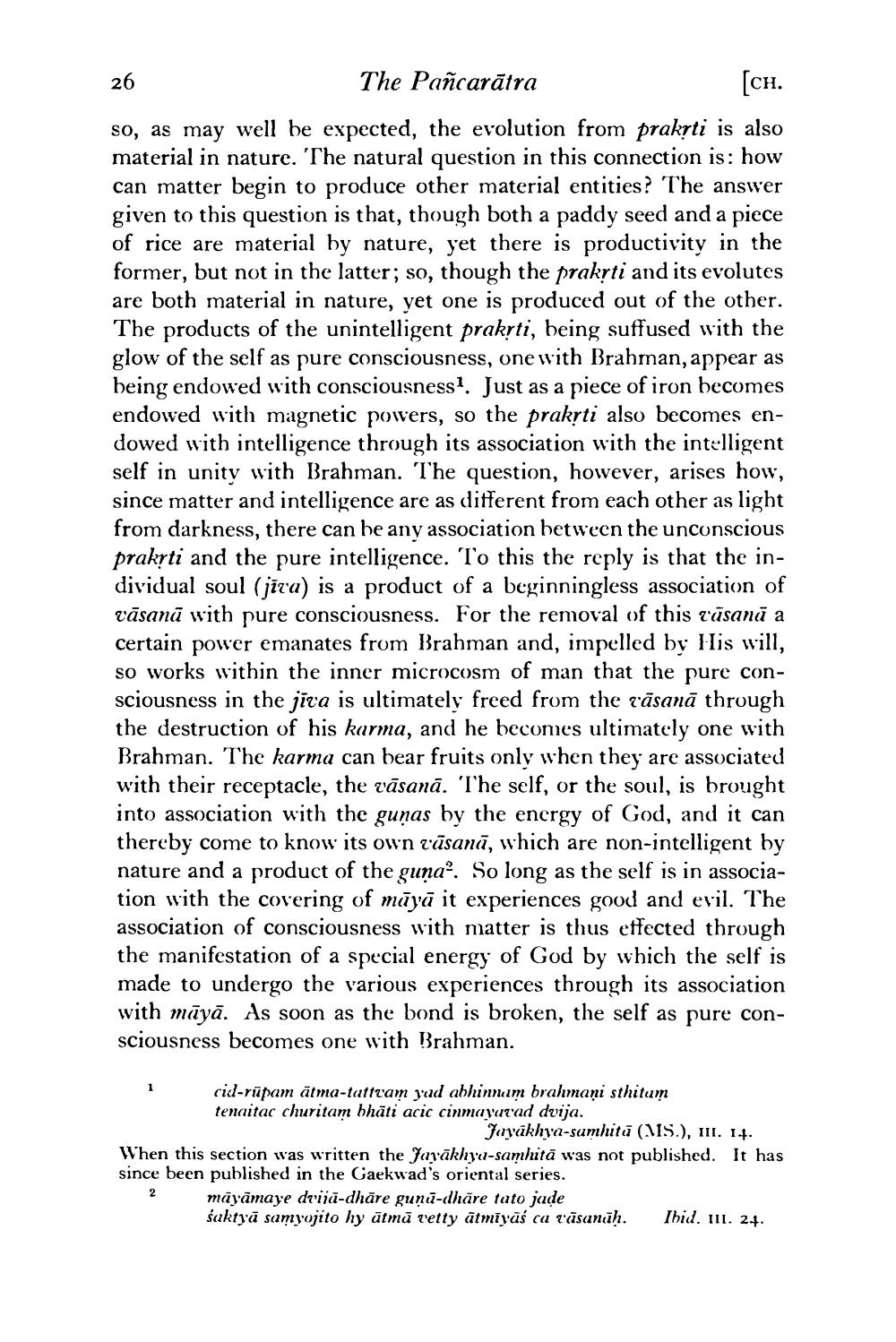________________
26
The Pañcarātra
[CH. so, as may well be expected, the evolution from prakrti is also material in nature. The natural question in this connection is: how can matter begin to produce other material entities? The answer given to this question is that, though both a paddy seed and a piece of rice are material by nature, yet there is productivity in the former, but not in the latter; so, though the prakrti and its evolutes are both material in nature, yet one is produced out of the other. The products of the unintelligent prakrti, being suffused with the glow of the self as pure consciousness, one with Brahman, appear as being endowed with consciousness?. Just as a piece of iron becomes endowed with magnetic powers, so the prakrti also becomes endowed with intelligence through its association with the intelligent self in unity with Brahman. The question, however, arises how, since matter and intelligence are as different from each other as light from darkness, there can be any association between the unconscious prakrti and the pure intelligence. To this the reply is that the individual soul (jira) is a product of a beginningless association of vāsanā with pure consciousness. For the removal of this rāsanā a certain power emanates from Brahman and, impelled by His will, so works within the inner microcosm of man that the pure consciousness in the jīra is ultimately freed from the rāsanā through the destruction of his karma, and he becomes ultimately one with Brahman. The karma can bear fruits only when they are associated with their receptacle, the vāsanā. The self, or the soul, is brought into association with the guņas by the energy of God, and it can thereby come to know its own rāsanā, which are non-intelligent by nature and a product of the guna?. So long as the self is in association with the covering of mīyā it experiences good and evil. The association of consciousness with matter is thus effected through the manifestation of a special energy of God by which the self is made to undergo the various experiences through its association with māyā. As soon as the bond is broken, the self as pure consciousness becomes one with Brahman.
cid-rūpam ātma-tattvam yad abhinnum brahmani sthitum tenaitac churitam bhāti acic cinmayurad dvija.
Jayakhya-sumhitū (WIS.), III. 14. When this section was written the Javākhya-samlitā was not published. It has since been published in the Gaekwad's oriental series.
māyāmaye drija-dhāre gunu-dhāre tato jade Śaktya samyojito hy ātmā vetty átmīyās ca t'āsancih. Ibid. II. 24.




